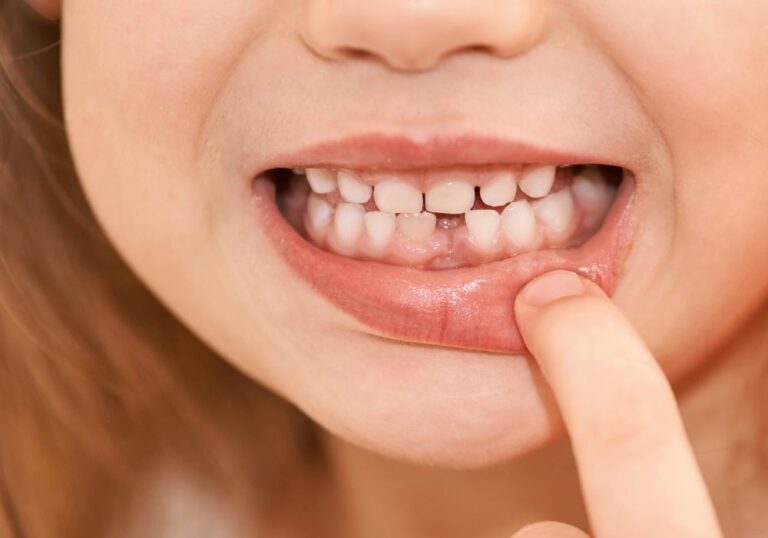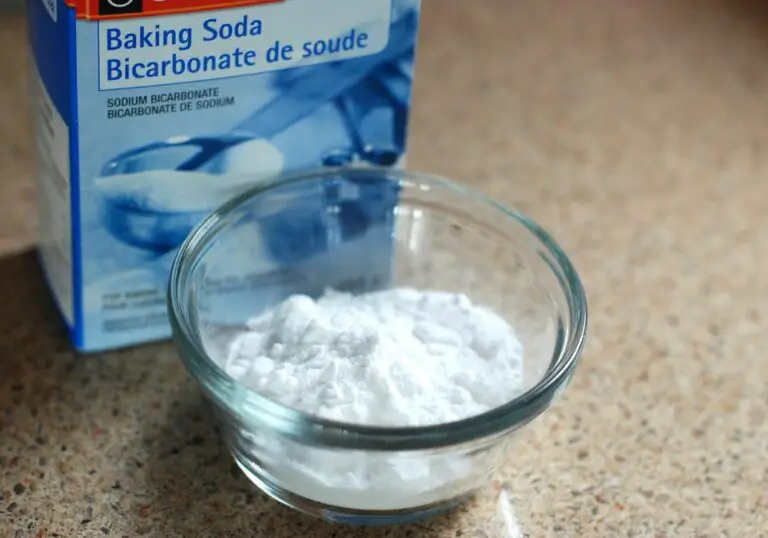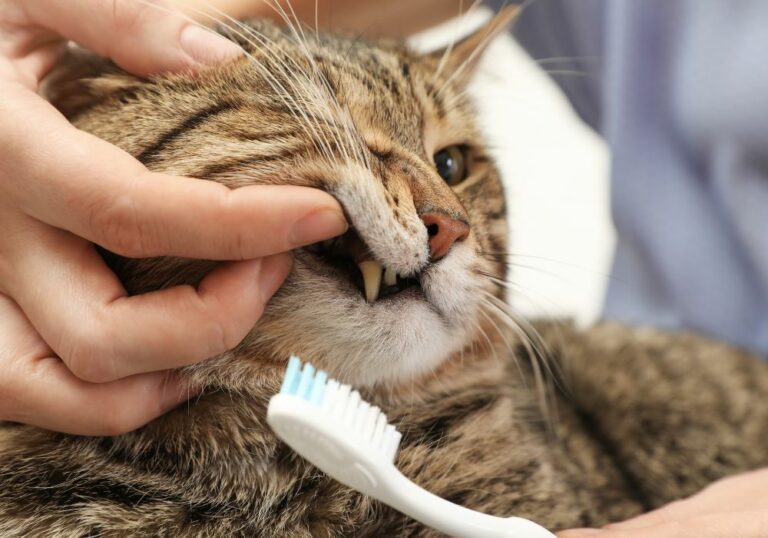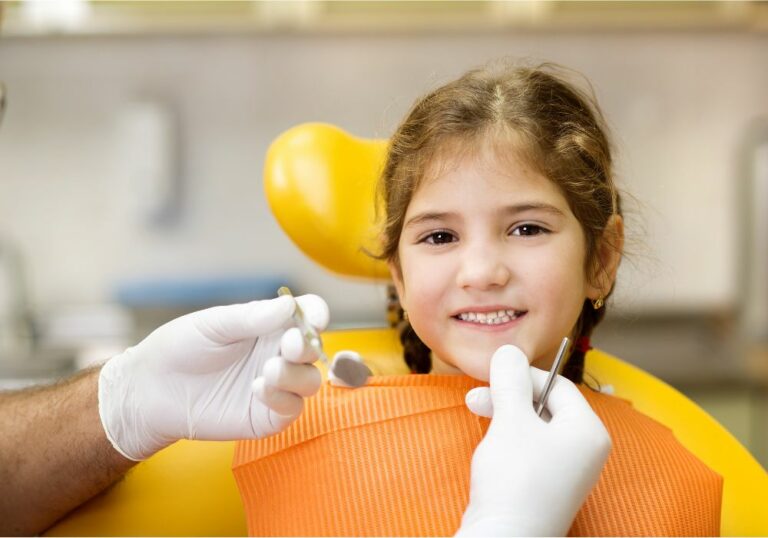For millions of people worldwide, coffee is an indispensable part of the morning ritual. However, many coffee lovers find that their favorite caffeinated beverage also leaves unsightly stains on their pearly whites. If you’ve noticed your teeth darkening from your daily java fix, you’re not alone.
Coffee’s propensity to stain teeth can be irritating, especially if you enjoy flashing a bright, white smile. Understanding exactly why coffee is prone to discoloring your teeth can help you take the proper precautions to deter stains. We’ll examine coffee’s chemical composition, the causes of tooth staining, risk factors, and preventive strategies in detail. Read on to demystify why coffee is so adept at corroding tooth enamel and how to preserve your teeth’s natural whiteness.
Chemical Composition of Coffee

Coffee consists of over 1,000 different chemical compounds that impact flavor, aroma, and physical properties. Many of these chemicals also influence staining potential. Let’s look at some of the key players:
Chlorogenic Acids
Chlorogenic acids are a family of antioxidant compounds called polyphenols, which comprise up to 9% of coffee beans by weight. They are subdivided into three primary forms:
- 5-caffeoylquinic acid
- 3-caffeoylquinic acid
- 4-caffeoylquinic acid
Chlorogenic acids impart coffee’s bitter taste and astringency. When the coffee bean is roasted, these polyphenols undergo structural changes that enhance their ability to bind to enamel proteins on teeth. Over time, this bonding leads to brownish discoloration.
Tannins
Tannins are another form of polyphenols abundant in coffee beans, especially the outer cherry skin. Their name comes from their historical use in the tanning of leather.
Like chlorogenic acids, tannins contribute to coffee’s naturally bitter flavor. They also readily interact with salivary proteins, causing the dry mouth sensation after drinking coffee.
Tannins are attracted to the mineral structure of dental enamel. As they precipitate on the enamel, tannins cause yellowish-brown staining.
Caffeine
Caffeine is the famous stimulant compound in coffee responsible for its energizing effects. While it does not directly cause tooth staining, caffeine contributes by drying out the mouth.
Insufficient saliva flow allows stain-causing pigments to remain on tooth surfaces for longer periods. Saliva’s natural rinsing action is important for clearing residues.
Acids
Coffee exhibits an average pH between 4.5-5.0, giving it mildly acidic properties. Potential acids in brewed coffee include:
- Chlorogenic acids
- Citric acid
- Acetic acid
- Malic acid
When acidic coffee repeatedly contacts tooth enamel, it can erode the mineralized surface over time. This erosion makes teeth more porous and prone to deep staining as pigments more readily penetrate into the microscopic pits. The longer coffee is held in the mouth, the greater the opportunity for enamel demineralization.
Melanoidins
As coffee beans are roasted, their natural sugars and amino acids react via the Maillard reaction to form melanoidins. Responsible for the brown color of roasted coffee beans, melanoidins are also able to bind to tooth proteins.
However, melanoidins do not actively stain teeth to any significant degree. Their role is minor compared to polyphenols and tannins.
How Do Coffee Compounds Stain Teeth?
Coffee introduces staining via two primary mechanisms:
Extrinsic Staining
Extrinsic stains affect the enamel surface and are not incorporated into the mineral structure. This type of staining occurs due to compounds like chlorogenic acids, tannins, and melanoidins precipitating onto the exterior of teeth.
External debris can then bind to this pigmented film on the enamel, forming plaque. Over time, plaque hardens into calculus or tartar.
Extrinsic staining can usually be removed by brushing, hydrogen peroxide rinses, baking soda cleaning, or professional dental cleaning.
Intrinsic Staining
Intrinsic stains become embedded into the microscopic pores within the enamel structure, leading to deeper discoloration.
This occurs after the enamel’s surface has been eroded by the acids in coffee, increasing porosity. Stain pigments can then penetrate and bind to interior proteins.
Intrinsic staining is difficult to remove at home and requires professional whitening treatments.
What Factors Influence Stain Severity?
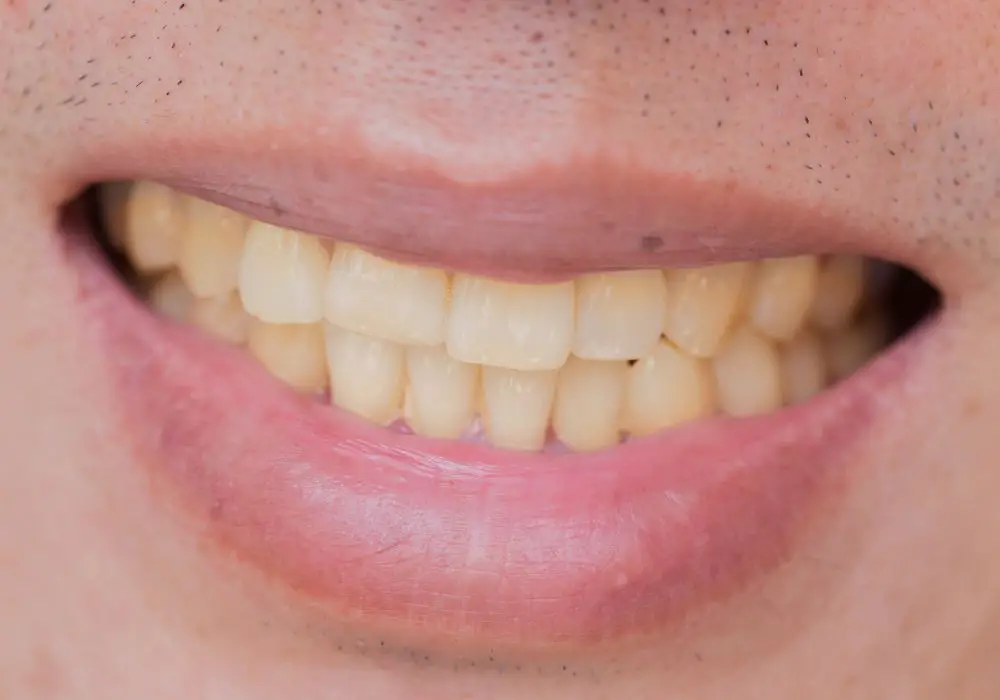
While most coffee drinkers notice some degree of tooth staining, the intensity varies substantially on an individual basis. The following aspects contribute to how severely coffee will stain teeth:
Frequency of Coffee Consumption
Drinking coffee more often throughout the day provides teeth with repeated exposure to staining compounds. The prolonged contact time with staining pigments maximizes binding opportunities.
Having coffee only occasionally results in minimal staining effects. But for those who sip coffee continuously throughout the day, significant discoloration occurs.
Roast Level
The degree of roasting correlates with staining potential. Light roasts actually have the least staining capacity.
As roasting time is extended, chlorogenic acids and tannins undergo chemical browning reactions. Medium roasts increase in staining compounds.
Dark roasts like espresso and French roast contain double the amount of stain-promoting polyphenols compared to light roasts. Charred black bean styles have especially high staining effects.
Temperature
Hot coffee causes more significant staining than iced coffee. Higher temperatures increase the rate of enamel erosion from acids.
Thermal energy also expands pores in enamel, allowing deeper penetration of stain pigments into the structure.
Iced coffee lacks the thermal effects of hot coffee, reducing etching and staining, though chilled temperature also slows the rinsing effects of saliva.
Contact Time with Teeth
The longer coffee stays in contact with teeth, the greater the opportunity for staining compounds to adhere to enamel and seep into pores.
Slowly sipping coffee throughout the morning results in more staining versus quickly drinking a cup then rinsing the mouth with water. Using a straw decreases contact.
Addition of Creamers and Sweeteners
Adding dairy creamers helps reduce staining by coating the enamel surface. The same goes for sugars, which bind to the enamel.
However, creamer and sugar introduce their own problems. Cream forms a film where debris collects more easily. Sugar fuels acid-producing bacteria.
Overall, additives like cream or sugar have a minimal protective effect against staining.
Saliva Flow Rate
Saliva naturally rinses the mouth and teeth, clearing staining pigments before they can bind strongly. People who generate less saliva are more prone to staining.
Certain health conditions, medications, tobacco use, and aging can all impair saliva flow. Dry mouth allows longer contact between coffee and enamel.
Tooth Enamel Thickness
Enamel differs in porosity and mineral content between individuals, based on genetics and oral hygiene habits.
Thinner enamel with more porous structure and exposed proteins absorbs stains more intensely. Enamel naturally becomes more porous with age as minerals leach out.
Genetic Predisposition
In addition to enamel thickness, genetics influence saliva flow and composition. Lower saliva rates and more acidic saliva cause greater enamel erosion.
Genetic variation in enamel proteins also affects binding affinity for staining compounds. All these factors increase staining susceptibility.
Oral Hygiene Habits
Insufficient oral hygiene like infrequent brushing or flossing allows more time for coffee pigments to penetrate enamel pores and form calculus.
Flossing and brushing physically remove some external stain buildup. Those with poor hygiene accumulate more stubborn stains.
Tobacco Use
Combining coffee drinking and tobacco smoking/chewing exaggerates staining effects.
Tobacco smoke creates yellowish buildup on teeth that augments and complicates coffee discoloration. The combined stain is more challenging to remove.
How Can I Prevent Coffee from Staining My Teeth?
While coffee’s staining potential cannot be completely eliminated, you can take certain measures to minimize discoloration:
Drink Coffee in Moderation
Limit total consumption to 1-2 cups per day. Spread out drinking instead of continuously sipping cup after cup. This reduces total contact time.
Drink coffee quickly rather than leisurely, holding the liquid in your mouth. Use a straw to bypass teeth contact.
Choose Light Roasts
Opt for light roasted beans which have lower polyphenol content compared to dark roasts. Cold brewed coffee has fewer enamel-eroding acids too.
Avoid Added Cream or Sugar
Skip the dairy and sweeteners, which adhere to teeth and allow plaque accumulation. Sugar also feeds staining-causing bacteria.
Drink Coffee Before Brushing Teeth
Plan coffee before morning brushing to maximize stain removal. Coffee compounds bind weakly at first – brushing right after drinking removes more residues.
Rinse Mouth After Drinking
Swish water around after coffee to rinse away staining pigments. Rinsing prevents residual compounds from settling on enamel.
Get Regular Dental Cleanings
Professional cleanings every 6 months remove surface stains and tartar deposits that brushing misses. Keep teeth free of Calculus buildup.
Apply Dental Sealants
Sealants fill in the natural crevices and pits within enamel, creating a smooth barrier that prevents stain absorption into porous areas.
Consider Tea as an Alternative
While not stain-free, teas tend to be less erosive and contain fewer tannins than coffee, making them a bit gentler on enamel.
How Do You Remove Existing Coffee Stains?
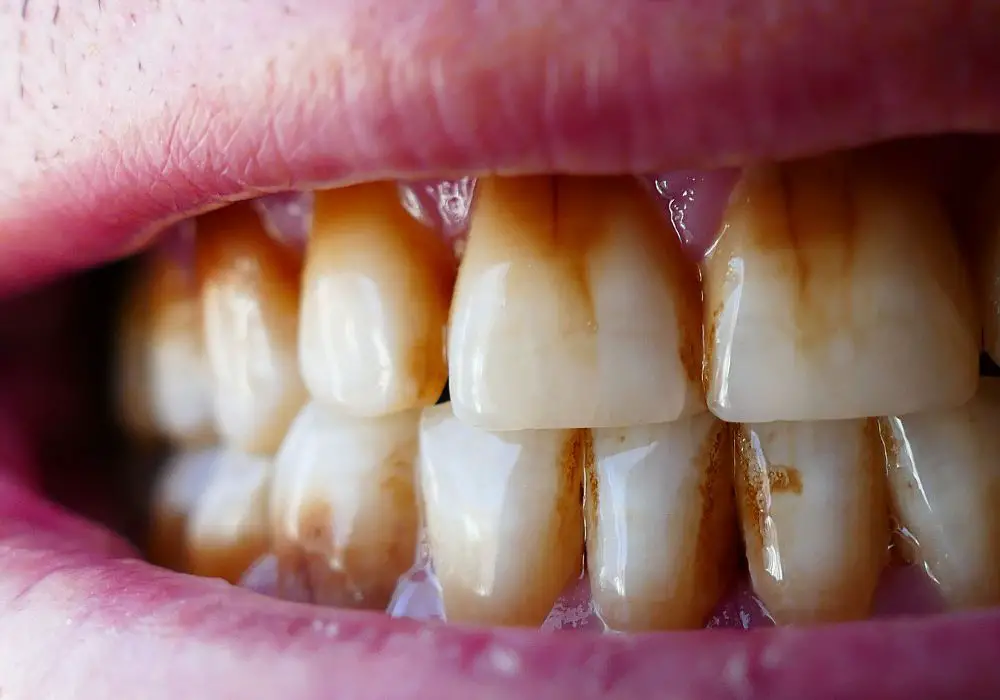
If it’s too late to reverse discoloration from coffee, you can diminish stains using these methods:
Baking Soda
Baking soda or sodium bicarbonate has natural abrasive and whitening properties. Mix with water into a paste and brush onto stained teeth. Rinse when done.
Do not brush vigorously, as baking soda’s abrasiveness at high force can damage enamel. Use gently once or twice per week.
Hydrogen Peroxide
Hydrogen peroxide causes foaming and oxidation when applied to stains, helping lift pigment molecules off the outer enamel.
Swish over-the-counter 3% hydrogen peroxide around teeth for 1-2 minutes, then rinse. Use once weekly. Do not swallow.
Whitening Toothpastes
Some whiteners like silica gently polish away surface stains. Certain chemicals like pyrophosphates inhibit new pigment deposits.
Effects are mild, but whitening toothpastes can modestly improve stain intensity when used regularly.
Whitening Strips and Gels
Products like Crest Whitestrips contain peroxide gel that stays on teeth 15-30 minutes. The peroxide diffuses into enamel, oxidizing and lightening stains.
Use twice daily for 1-2 weeks according to package directions. Results are noticeable but gradual. Moderate sensitivity may occur.
Professional In-Office Whitening
Your dentist applies concentrated peroxide gel to teeth and uses laser light or heat to accelerate penetration. Results are seen after 1-3 visits.
This method produces dramatic whitening through deeper oxidation of stubborn stains. Is effective but costly. High sensitivity is common.
At-Home Whitening Trays
Your dentist makes custom trays that are filled with peroxide gel and worn for 2+ hrs daily for up to 2 weeks. Trays target stains efficiently. More affordable, less sensitivity than in-office care.
Over-the-counter tray kits are available, but custom trays maximize results and minimize gum irritation.
Frequently Asked Questions
Why is coffee acidic?
Coffee contains chlorogenic and other organic acids which impart a mild acidity around pH 5. Roasting increases acidity somewhat as new acids form. Darker roasts are more acidic than light. The acidity enhances coffee’s bright, fruity flavor but also impacts teeth.
Do whiteners damage enamel?
In moderation, hydrogen peroxide and carbamide peroxide whitening gels are safe for enamel. However, high concentration peroxide gels applied too frequently and aggressively can demineralize enamel over time, causing temporary sensitivity or recession of the gums.
Can you permanently remove coffee stains?
Surface extrinsic stains can be permanently eliminated through professional cleaning, provided the underlying cause of staining is also removed. Intrinsic stains incorporated into enamel are irreversible, but can be lightened and masked by several shades through diligent whitening regimens.
Does milk in coffee help with staining?
Milk proteins form a thin film on enamel that acts as a temporary barrier against stain absorption. However, the lactose sugar in milk is eventually metabolized by bacteria into acids that contribute to enamel erosion. Overall, milk has minimal protective effect.
Why do older people have darker stains?
Enamel naturally yellows over time as minerals leach out, increasing porosity. Older individuals also produce less stain-cleansing saliva. Stains accumulated over many decades without proper removal will appear darker and more ingrained. The enamel is also thinner, allowing deeper stain penetration.
Conclusion
In summary, coffee’s propensity to stain teeth is attributed to its acidic pH, polyphenols, and tannins that erode and penetrate the tooth’s vulnerable enamel layer. Staining potential depends greatly on personal habits and oral hygiene. While difficult to avoid entirely, implementing preventive measures can help coffee drinkers preserve their teeth’s natural whiteness as long as possible. Be proactive and don’t let coffee sabotage your smile!

